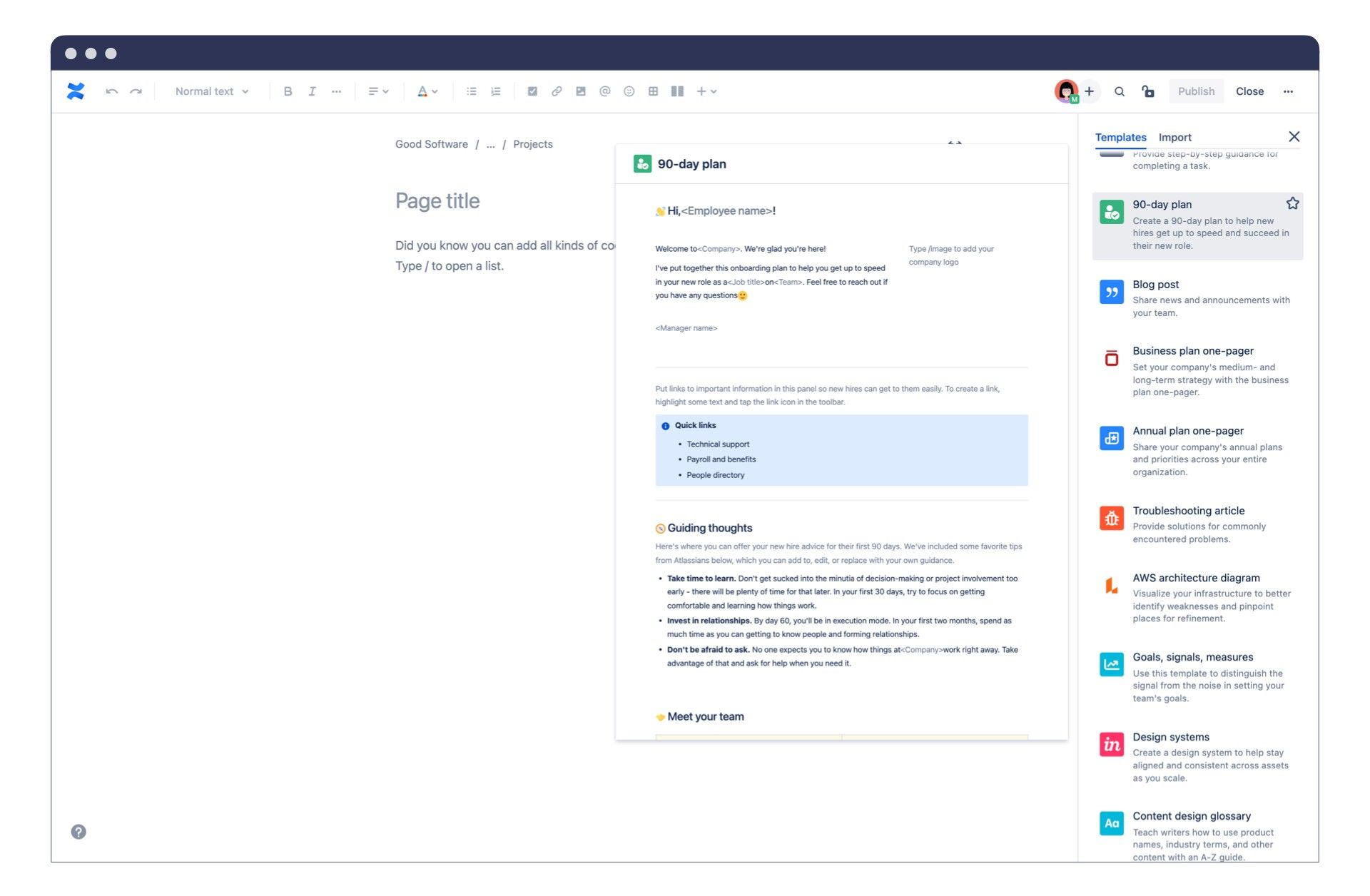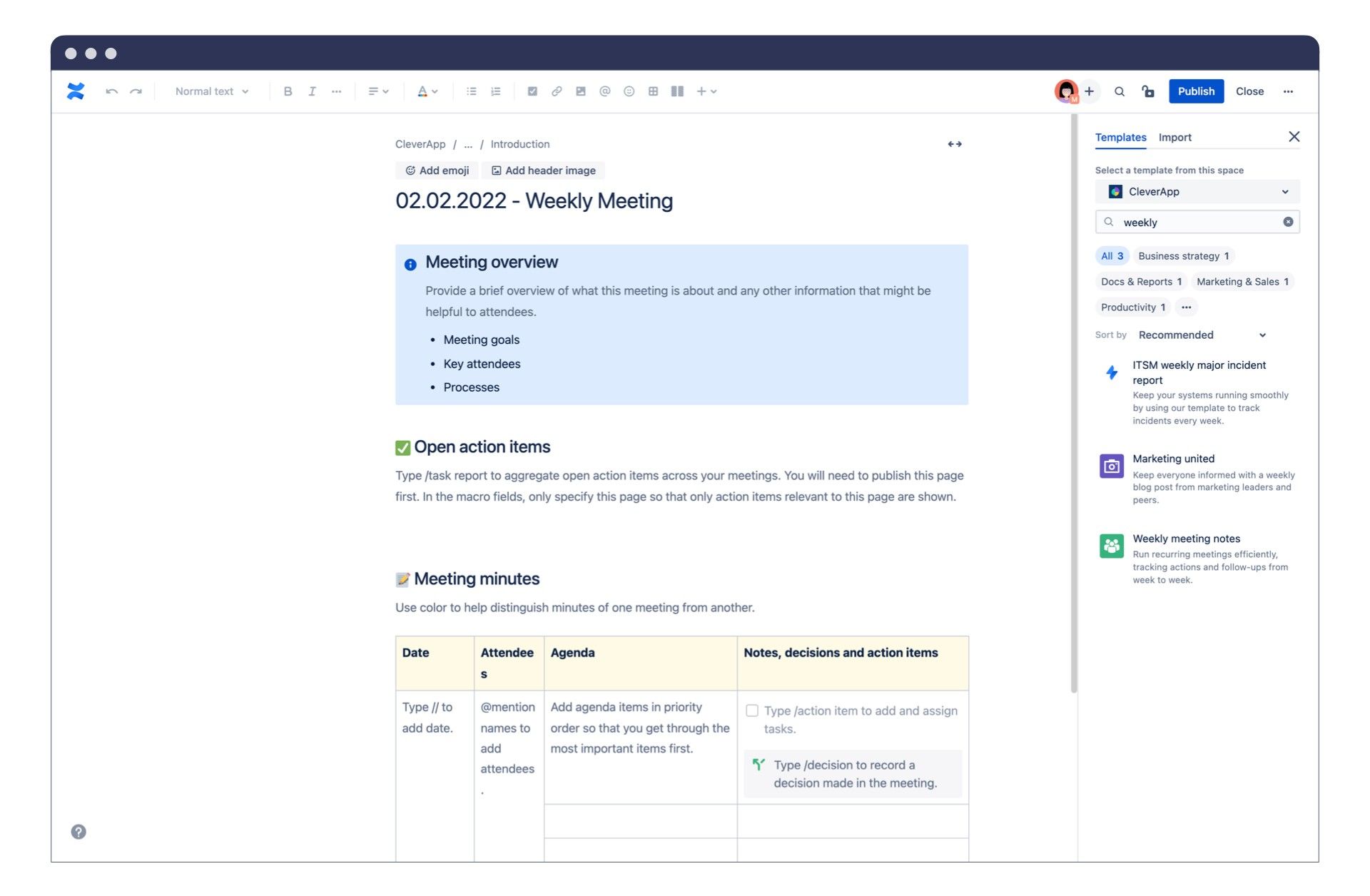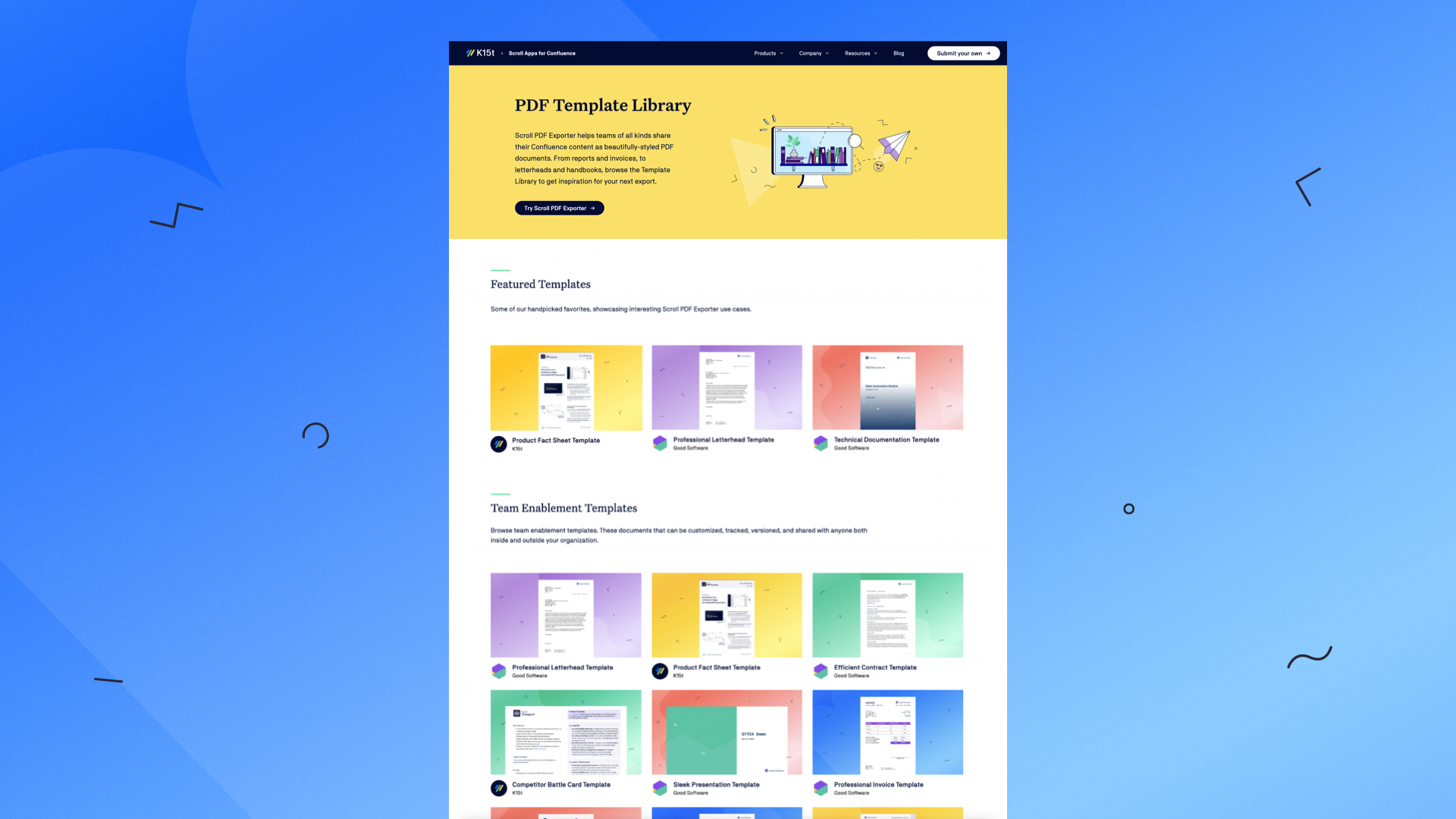Why You Should Be Using Templates in Confluence
Confluence is a fantastic tool for creating and sharing content across your entire team. It takes mere seconds to set up a page and start working together. But the more your team uses it, the more you will find that you need to start standardizing your content. This is especially true for repeating content, like weekly team meetings, project planning, retrospectives, etc. Without some kind of structure, your content will become messy and inconsistent.
This is where templates come into play. In this article we will show you:
How to use pre-made templates within Confluence and how to find the perfect template for your team.
Why Confluence templates are not just nice to have, but an essential tool for enabling your team to create great Confluence content quickly and consistently.
How templates help tackle the ‘blank page’ problem that acts as a roadblock for new content.
Where you should be using templates, and when you might want to consider other options.
Using Pre-Made Templates in Confluence
Don’t worry, you don’t need to create your own templates from scratch. Confluence has over 100 free page templates to choose from so it’s very likely they will already have one to suit your needs. When you create a new page, a template browser will pop up in Confluence.

Simply search in the template browser with what type of template you’re looking for, eg. “meeting” or “roadmap”. Once you find one you like, you can favorite it for future use.
If you are an admin for the space, you can also go into templates in the space settings and “promote” your chosen template. Now when other colleagues in that space are choosing which template to use, they will see that template listed as promoted in the template browser.
Pre-made templates will have a “learn more” link in the template browser where you can find a fully documented use case scenario for any template.
Templates as an Essential Tool
Templates aren’t just there to make your work look pretty. They are an essential tool in making your team’s work more structured and quicker to create, and should be treated as such. There are a few key ways templates speed up your content creation process.
Authors don’t need to think about the design and layout, remember what macros should be used, and what content must be included. They can instead focus entirely on the topic at hand.
Ensures key pieces of data are included in every page and aren’t forgotten about. A good template should guide the user to include each important piece of information.
Users aren’t halted by the dreaded “blank page problem” and can get to creating straight away.
The Blank Page Problem
Have you ever opened up a new Confluence page and then stared at your screen, unsure where to even begin? Then you have been struck by the “blank page problem”.
Similar to writer’s block, your work can be slowed right at the beginning when you are paralyzed by indecision on where to start. A template means you can start filling in data straight away and the structure can assist you in where you should begin, getting those neurons in your brain firing and those creative juices flowing as you start creating your beautiful content.
If following the template doesn’t help you overcoming the blank page problem, the next best option is to take a break. You’d be amazed at what a quick walk outside or a trip to the coffee machine can do to clear your head.
Use Cases for Templates
You’ve made it this far and you have been mostly convinced that Confluence templates are great, but aren’t sure what type of content you should start using them for. This will depend heavily on your team and what type of content you’re producing. A good rule of thumb though is if you think your team will be using a type of page format multiple times, then it might be worth setting up a template for that page.
Some good examples are:
Project Templates: This makes it much easier to have an overview of your current projects and keep track of their status. It also helps the authors know what details they should include in any project document and what milestones they should include while the project is in the works.
Weekly Update Template: A news page that teams can internally communicate their achievements, project progress, and other news to everyone in the company. The same structure each week makes it easy for people to read and contribute to when they know what type of content goes where in the template.

It’s much better to be proactive about setting up templates. Setting one up early on can really save work and confusion later on. That said, while you don’t want to get through six months of weekly update meetings drawn up on Confluence and then realize you should have been using a template, don’t let that dissuade you from setting one up now. The best time to set up a template was six months ago. The second best time is now!
If you are only creating a few pages in a similar style, try copying an existing page in Confluence, rather than setting up a template.
By now you’re hopefully convinced that there are a number of use cases for templates in your team. We can walk you through the early stages of choosing and setting up a template with our video: Get Started Quickly With Page Templates in Confluence.
Have you looked through all the available templates but couldn't find the perfect one for you? It might be time to make your own. Create the best template for your team by following our guide: Best Practices When Creating Your Own Template in Confluence.
Once you start using Confluence page templates, you may also need to export your content as PDF documents. Our Template Library offers a range of export templates designed to match Confluence’s own page templates – making it easy to turn your pages into professional-looking PDFs.
Check out templates for Meeting Notes, a 90-Day Onboarding Plan, How-To Article, Statements of Work, and Creative Briefs – new templates added regularly!




